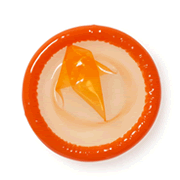3 Important STI Facts to Know if You’re Having Sex

But it's good just to know them in general, too!
Part of keeping you and your sex life healthy is knowing what’s true and what’s not when it comes to sexually transmitted infections (STIs). But there’s a lot of false or inaccurate information out there, and it can be hard to figure out what’s what.
We want you to have the most accurate, up-to-date, and non-biased information about sex and birth control, including important facts to know about to STIs. For answers to your specific questions, make an appointment to talk to a provider at your nearest The Right Time health center.
Fact 1: STIs are super common.
Lots of people think STIs only happen to other people. But data from the CDC says that one in five people – which is approximately 20% of the U.S. population – had an STI in 2018. This means STIs are incredibly common! In fact, pretty much everyone you know has had HPV (aka the most common sexually transmitted infection), and there’s a good chance you’ve even had it too.
But don’t be scared. This information doesn’t have to freak you out, because…
Fact 2: STIs are NOT shameful.
Here is something very important to remember about STIs: while living with one can (literally) be a pain, it’s nothing to be ashamed of or freak out about.
Try thinking about it like this: a genital infection isn’t necessarily worse than an infection you might get anywhere else in your body. As humans who interact (and have sex with) with lots of other humans during our lifetimes, we’re going to trade germs and get each other sick.
Here’s how Emma McGowan, a former sex advice columnist, puts it:
A sense of shame is a common reaction to any STI diagnosis. But it’s not because STIs are the worst thing that can ever happen to you. In many cases, they don’t affect your life much at all. These feelings happen because of STI stigma, which is the prejudice against people who have had or currently have an STI. STI stigma centers on the false belief that an infection in your genitals is somehow morally worse than an infection anywhere else in your body... But if you believe that other types of sex are not only not wrong, but actually can be really fun and enriching, then why hang on to this idea that people with STIs are shameful?
Fact 3: You can’t always tell if someone has an STI.
The most common symptom of all STIs is no symptom at all. You can have an STI without any symptoms, and you can have mild symptoms that you don’t notice and/or mistake for something else. Herpes, for example, can lay dormant for years without causing any obvious symptoms. For that reason, most people with an STI are unaware they have one.
So, if the person with an STI doesn’t even know they have one, there’s no way you can tell just by looking at (or touching) them. It’s a myth that things like appearance and cleanliness are indicators of infection, and some traditional practices such as douching after sex or brushing your teeth after a make-out session can actually make you more susceptible to STIs.
Remember, for answers to your specific questions about STIs and for information on how to protect yourself, make an appointment to visit a provider at your nearest The Right Time health center.
Related Content

Article
Birth Control & Your Period: What to ExpectBirth control often changes your period, and that’s normal and safe.

Article
Handling the “When Are You Having Kids?” Question Around the HolidaysRemember: your timeline is yours.

Article
What Should I Do After I Get Diagnosed with an STI?Getting an STI doesn’t change who you are.

Article
How Can I Take Care of My Breast Health?Keeping up with routine preventative health visits can help catch any changes early.



















